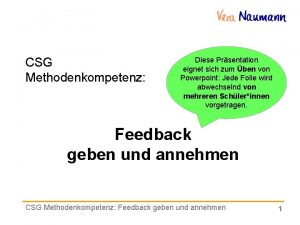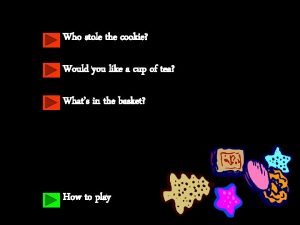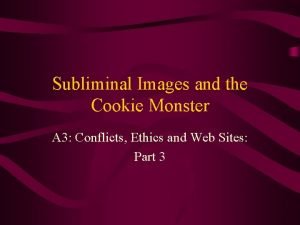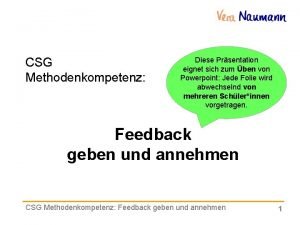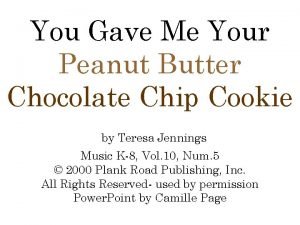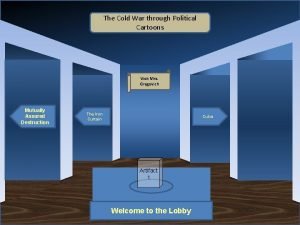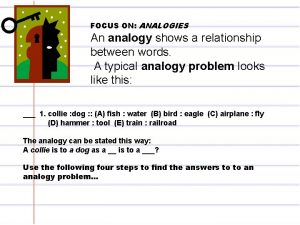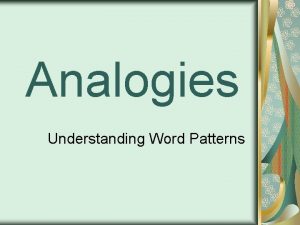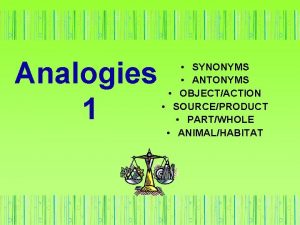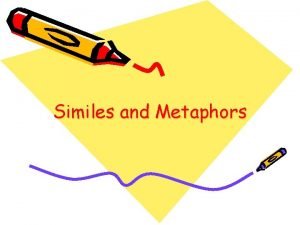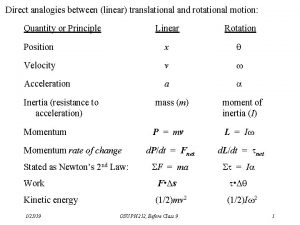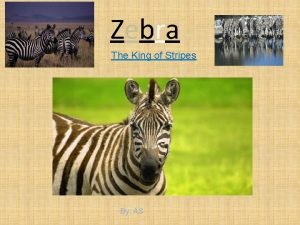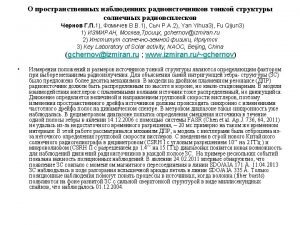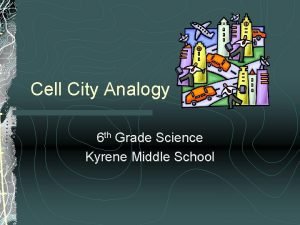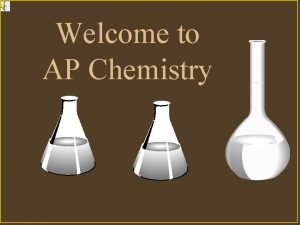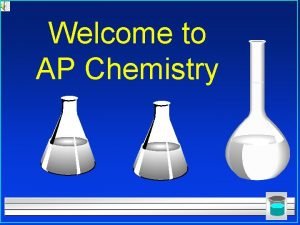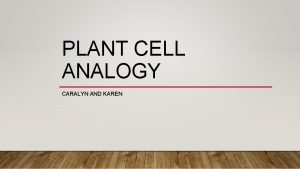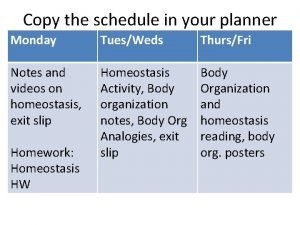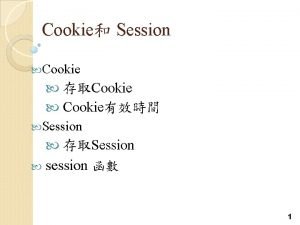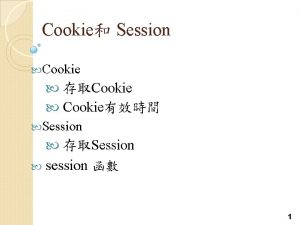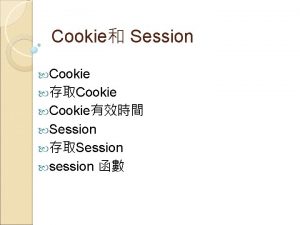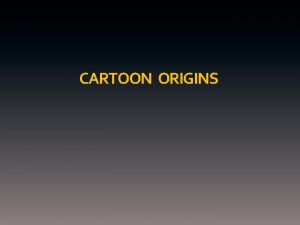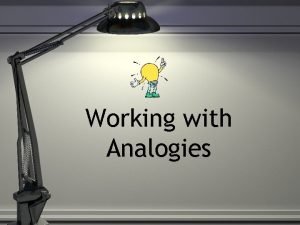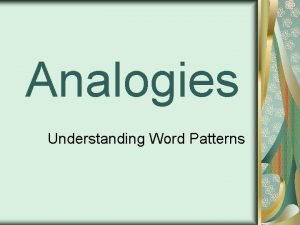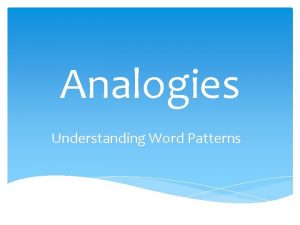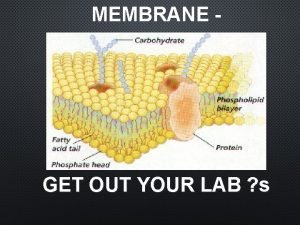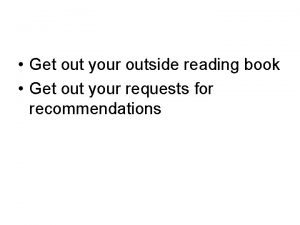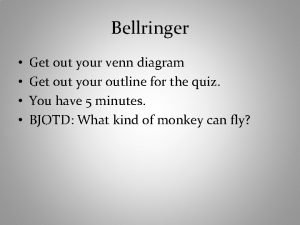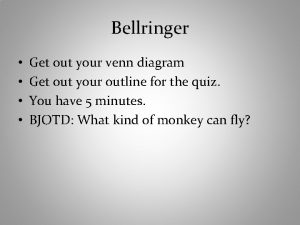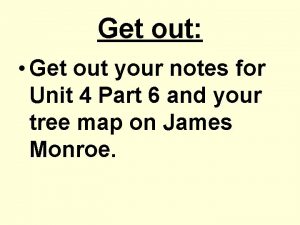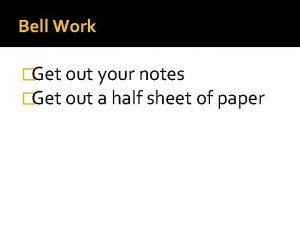Get out your cookie cartoon Cookie making analogies































- Slides: 31

Get out your cookie cartoon. Cookie making analogies

The Cookbook is like: DNA

The Cookie Recipe is like: gene A Gene holds the instructions for making a specific protein. There are 1000’s of genes in our DNA

The Cookie is like: protein Instructions for making proteins are found in genes.

Bobby’s house is like: the nucleus

The Transcribed Recipe is like: RNA is a molecule very similar to DNA.

Outside of Bobby’s house is like: cytoplasm of the cell

Stacey the Cookie Maker is like: the ribosome and t. RNA Ribosomes and t. RNA are molecules that help build proteins– using instructions from m. RNA.

1. The cookbook has a lot of recipes. 2. There is a recipe for making cookies. 3. The cookbook with the recipes cannot leave the house. 4. The recipe gets transcribed into a written out recipe. 5. The written out recipe leaves the house. 6. Stacey follows the instructions on the written out recipe. 7. Cookies are made.

1. The cookbook has a lot of recipes. genes DNA 2. There is a recipe for making cookies. gene proteins 3. The cookbook with the recipes cannot leave the house. gene DNA nucleus 4. The recipe gets transcribed into a written out recipe. “copied” gene m. RNA 5. The written out recipe leaves the house. m. RNA nucleus 6. Stacey follows the instructions on the written out recipe. Ribosomes & t. RNA m. RNA 7. Cookies are made. Proteins

1. How is DNA like a cookbook? DNA has the instructions for making everything in the cell. DNA is a very important molecule.

2. Why are genes like recipes? Inside of our DNA are genes. Genes are small segments of DNA that hold the information needed to make a specific protein.

3. What happens when proteins need to be made? When a certain protein is needed in the cell, the gene with those instructions is needed. Proteins are made outside the nucleus, but the information for making proteins is found in the nucleus. DNA cannot leave the nucleus.

4. How does the information needed to make proteins get out of the nucleus? The needed gene is transcribed (copied) into a molecule called m. RNA.

DNA vs RNA Double strand Deoxyribose A T G C Can NOT leave nucleus RNA Single strand Ribose A U C G CAN leave the nucleus

5. What happens once the m. RNA is made? m. RNA is a molecule very similar to DNA. m. RNA can leave the nucleus.

6. How do the instructions in RNA get made into a protein? Molecules called t. RNA and ribosomes follow the instructions found in m. RNA and help create the needed proteins.

7. The final product The protein is now made and can be used by the cell.

Post-Note Questions 1. Explain why transcribing (copying) DNA into RNA is an essential step for making proteins?

Post-Note Questions 2. In step 4, genes (small segments of DNA) get transcribed into RNA. Why is only the gene transcribed and not all of the DNA?

Making Proteins vs. Making Cookies Cookie Cartoon Summary Statements in between. Protein Cartoon

DNA Transcription and Translation

Practice DNA Strand: ACT ACG ATC GAC TAT What is the Complementary RNA strand? UGA UGC UAG CUG AUA

What Does RNA Do? Reads and transfers information from DNA to parts of the cell responsible for Building Proteins Is a temporary, reusable copy of the Genetic Code of certain Genes

Types of RNA • Messenger RNA m. RNA • After being formed, the m. RNA leaves the Nucleus and travels to the Ribosome • Transfer RNA t. RNA • Transfers Amino Acids (Makes up the new Protein) to the Ribosome as the Protein is being produced

A Few New Words Codon: A set of 3 Nucleotides Anticodon: 3 t. RNA Nucleotides which complement a Codon Amino Acid: Building block of a Protein

What is the m. RNA Code Sequence?

Transcription Video 4: 50 -5: 35


Translation Video: Sketch 7: 45 -10: 50

Final Products Amino Acid Chains (Proteins) are built to perform specific functions in the cell In the cell, Proteins have numerous jobs: Control the rate of reactions Regulate cell processes Form bones and muscles Transport substances into or out of cells Help to fight disease
 Personification in the song one thing by one direction
Personification in the song one thing by one direction Get into/out of
Get into/out of Cookie lemon cookie feedback
Cookie lemon cookie feedback Cookie monster who stole the cookie
Cookie monster who stole the cookie Cookie monster images
Cookie monster images Cookie lemon cookie feedback
Cookie lemon cookie feedback You put your right foot in
You put your right foot in You gave me your peanut butter chocolate chip cookie
You gave me your peanut butter chocolate chip cookie Get up get moving quiz
Get up get moving quiz Get up get moving quiz
Get up get moving quiz Get up get moving quiz
Get up get moving quiz Repetition pseudocode example
Repetition pseudocode example Get focused get results
Get focused get results Germer
Germer Mutually assured destruction cartoon
Mutually assured destruction cartoon Traditional economy cartoon
Traditional economy cartoon What is
What is Analogy types
Analogy types Author write chef cook what type of analogy
Author write chef cook what type of analogy Author write chef cook what type of analogy
Author write chef cook what type of analogy Animal/habitat analogy examples
Animal/habitat analogy examples Spring metaphor poems
Spring metaphor poems Analogy between linear and rotational motion
Analogy between linear and rotational motion Zebras adaptations
Zebras adaptations Zebra analogy
Zebra analogy Cell city analogy
Cell city analogy Bees hive bears analogy
Bees hive bears analogy Science fiction often uses nautical analogies
Science fiction often uses nautical analogies Science fiction often uses nautical analogies
Science fiction often uses nautical analogies Analogy of cell wall
Analogy of cell wall Image analogies
Image analogies Give an example of homeostasis.
Give an example of homeostasis.


